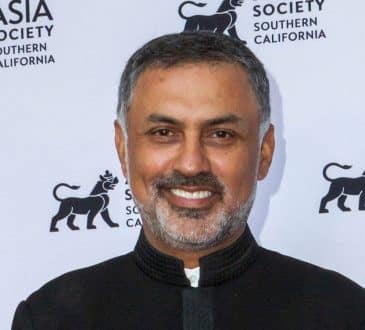What CEOs need to know when executing a Target Operating Models (TOM)

Global economic uncertainty is surging amid extraordinary events arising from geopolitical and economic challenges, including the war in Ukraine, inflation, supply chain disruption and so on. These uncertainty shocks have real consequences for industries and businesses all over the world.
To stay afloat, organisations are transforming their businesses and operating models to adapt to a new landscape by enhancing their customer experience, leveraging data and technology and cutting-edge strategies. Senior executives are urged to now take action which may significantly determine organisations’ fate.
However, for decades, studies have also shown that brilliant strategies do not usually translate into successful performance. In fact, these studies have been showing a 70% failure in strategy execution.
During the financial crisis of 2008, a more sophisticated strategy execution method, named Business Architecture and Target Operating Model (TOM) emerged to resolve the gap between formulation and execution.
Reference has often been made to an organisation’s Operating Models, but not many have been made to the “to-be” Operating Model within the context of a strategy execution. The TOM framework is a powerful tool that provides a detailed design of the future business, or describes how an organisation needs to operate in the future to meet the organisation’s needs or strategic objectives.
However, strategy success is not only about the method itself, but also other factors may greatly influence the outcome of the strategy execution.
The key question is: What are the most critical success factors that may guarantee a successful execution of a Target Operating Models (TOM)?
I have conducted thorough research on the reasons why organisations may continue to fail when executing strategy, even if they employ the TOM framework. This research has been fully supported by Imperial College London. It consisted of reviewing papers on strategy execution spanning the last sixty-four-years, and empirical interviews with one hundred global consulting firms specialising in the TOM method.
Research and analysis were based on the evaluation of “soft” factors such as leadership, communication, culture, resources etc. The ‘soft’ or ‘people’ factors seem to be the most important aspect to guarantee a successful implementation of a strategy.
In the literature, a differentiation has been made regarding leadership styles. For example, Bourgeois & Brodwin (1984) identified different styles of leadership when implementing strategy. They combined factors from both the formulation and implementation phase, together with other factors such as culture and organisation. The main conclusion was that the focus should be centralised on the CEO to direct the execution of the organisation’s strategy. Furthermore, Chandler (1962) referred to the importance of a top-down approach, by creating a view that strategy was formulated at the top and executed at the bottom (top-bottom approach); execution directions came from the top. Floyd & Woolridge (1996) agreed on the fact that the focus should be on top management. Inefficiency of strategic formulation or plans were also identified, and the recommendation was that senior executives should be fully involved in the end-to-end process of strategy implementation.
Herecleous (2000) stated that if middle senior managers believed that the strategy was not good enough, or did not think that they had resources with the right skills to implement the strategy, then there was a strong possibility that the implementation could be sabotaged. He also pointed out that groups could be found within the organisation that may disagree with the strategy, and thus could sabotage the execution of the strategy by either deliberate actions or inactions.
Noble (1999b) also referred to this problem of shared information. If managers or employees were not delivered the same expertise or information, then they could create problems by impeding the success of strategy implementation.
The literature did not clearly determine a difference between communication and consensus. However, communication was considered to be the tool to reach consensus. Floyd & Woolbridge stated: “we defined strategic consensus as agreement among top, middle, and operating-level managers on the fundamental priorities of the organisation” (1992a, p.28).
Forman and Argenti (2005) found that there was a need to align strategy implementation processes and communication within organisations experiencing substantial strategic change. (Forman & Argenti 2005, p.257).
Noble (1999b) accentuated the significance of achieving consensus across the entire organisation. If the same information was not shared at different layers within an organisation, this could result in the achievement of a poor consensus. The lack of communication and consensus could potentially lead to the creation of obstacles to successfully execute strategy.
Hrebiniak (2006) pointed out that if organisations are not able to manage strategic change because they are not unable to reduce change resistance, this could completely cause disaster for the strategy implementation. Alexander (1985) suggested that these problems that organisations experienced on a regular basis are those related to resources and people. For example: organisations did not possess adequate people-related skills to perform and sustain strategy implementation.
An empirical study was made by considering the TOM implementation framework.
This study was based upon in-depth interviews with leading consulting firms specialised in the implementation of the Target Operating Model.
According to the empirical studies, 80% of consulting firms confirmed that the success of the TOM implementation highly depended upon clear and senior sponsorship from the top management or senior executives. Additionally, input from top managers throughout the project was also critical. 41% of these consulting firms affirmed that objectives and strategy needed to be clear and understood, and 26% of the benefits were well communicated and understood across the organisation.
Furthermore, leading managing consulting firms also confirmed that 88% of their clients failed to back up operational changes with adequate people-related change management. This contributed to the failure of the TOM implementation.
My findings show that there are some important factors which organisations need to consider when implementing the TOM, the most critical being the full involvement of senior executives throughout the project. Unsurprisingly, given the importance of the TOM implementation projects, sponsorship tends to come from a senior executive level within organisations. This has its advantages: successful delivery of consulting projects in these areas relies on active support from the top. Indeed, 80% of consulting firms say that clear and senior sponsorship is a critical success factor. However, it’s not just about passive sponsorship: consultants are keen to point out that the success of these types of initiatives relies on director input being present throughout the projects.
Communication and consensus also play an important role in the strategy execution or the TOM implementation. The process of defining a TOM is very important because the framework needs to gain agreement or consensus at the executive level, and achieve real understanding by all stakeholders involved and ensure consistency in communication, direction and decision making throughout the full process of the TOM’s design and implementation processes.
Written by Antonia Gimenez.
Have you read?
The highest-paid tech CEOs in the United States.
Highest-Paid Biopharmaceutical CEOs in the United States.
Executive Pay: Top 8 Highest-Paid Hotel CEOs.
Openly LGBTQ CEOs at the helm of major global companies.
Top countries that admire their CEOs and other C-suite leadership teams the most.
Top Women CEOs of America’s largest public companies (2023 List).
Ready to join the CEOWORLD magazine Executive Council– Find out if you are eligible to apply.
Add CEOWORLD magazine to your Google News feed.
Follow CEOWORLD magazine headlines on: Google News, LinkedIn, Twitter, and Facebook.
This report/news/ranking/statistics has been prepared only for general guidance on matters of interest and does not constitute professional advice. You should not act upon the information contained in this publication without obtaining specific professional advice. No representation or warranty (express or implied) is given as to the accuracy or completeness of the information contained in this publication, and, to the extent permitted by law, CEOWORLD magazine does not accept or assume any liability, responsibility or duty of care for any consequences of you or anyone else acting, or refraining to act, in reliance on the information contained in this publication or for any decision based on it.
Copyright 2024 The CEOWORLD magazine. All rights reserved. This material (and any extract from it) must not be copied, redistributed or placed on any website, without CEOWORLD magazine' prior written consent. For media queries, please contact: info@ceoworld.biz
SUBSCRIBE NEWSLETTER








